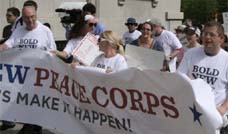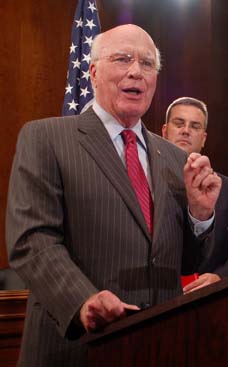
It's simple. People use a gridded world map as a guide to hand-draw and paint similar maps on school walls or plywood. Although the project remains popular with volunteers and teachers, I thought Twitter would be a good way to reach more people. I roughly followed Comm's 30-day plan by creating my Twitter account and my Web site, which featured free map-making manuals and pictures of maps made by volunteers around the world. Comm points out that a key is promoting your business by using the background space around the Twitter box where the tweets appear. Advertisement I created a background image featuring a map and the Web site address. The idea is to use Twitter to drive interested people to the Web site. To find interested people, I searched for tweets and sites mentioning "Peace Corps" and began to follow those individuals and organizations. Many of them, in turn, followed me. Then, I started tweeting.
Barbara Jo White writes: My "business" is The World Map Project, which I created during my service as a U.S. Peace Corps volunteer in the Dominican Republic from 1987-89
Book details how Twitter can help businesses
Barbara Jo White WCU Book Review •
August 16, 2009 12:15 AM
What do Elizabeth Taylor, Shaq, Ashton Kutcher and CNN's Anderson Cooper have in common? They use Twitter, a microblogging site where people type 140-character messages, and others can read them.
Advertisement
Hollywood star Kutcher recently amassed more followers than CNN in a celebrated race for the millionth follower.
We can see why it might be good for movie stars, athletes and news anchors to reach their fans on Twitter, but what about a business?
Joel Comm, in "Twitter Power," shows us how businesses can use Twitter as a marketing and branding tool.
Starbucks has two Twitter sites: one where new ideas are posted, and a customer-service site with more than 250,000 followers.
Comcast, with more than 25,000 followers, also resolves customer issues using Twitter.
Comm points out the business advantage of having Twitter followers watch the company solve problems quickly for other customers, instead of solving customer problems invisibly through e-mail.
Besides connecting with customers, the book also explains the use of third-party tools to provide additional functionality such as automatically following people who follow you, scheduling tweets that you write in advance or tools that display positive and negative comments about your product or service.
Comm also discusses the use of Twitter for team communication.
Finally, Comm provides readers with a 30-day plan to dominate your market using Twitter "the right way." I thought I should try it out.
My "business" is The World Map Project, which I created during my service as a U.S. Peace Corps volunteer in the Dominican Republic from 1987-89.
It's simple. People use a gridded world map as a guide to hand-draw and paint similar maps on school walls or plywood.
Although the project remains popular with volunteers and teachers, I thought Twitter would be a good way to reach more people.
I roughly followed Comm's 30-day plan by creating my Twitter account and my Web site, which featured free map-making manuals and pictures of maps made by volunteers around the world.
Comm points out that a key is promoting your business by using the background space around the Twitter box where the tweets appear.
Advertisement
I created a background image featuring a map and the Web site address. The idea is to use Twitter to drive interested people to the Web site.
To find interested people, I searched for tweets and sites mentioning "Peace Corps" and began to follow those individuals and organizations.
Many of them, in turn, followed me.
Then, I started tweeting.
Comm outlines seven types of tweets: link tweets describing what your business is working on now, with a link; classic tweets describing what your business is doing right now; opinion tweets; mission accomplished tweets; entertainment tweets allowing you to make followers laugh; question tweets that ask followers to help your business; and picture tweets.
Now for the results: I have almost 25 followers, and within 25 days, a volunteer in South Africa sent me four pictures.
According to Google Analytics, my Web site has had 96 visits from people in 15 countries.
In "Twitter Power," Joel Comm offers user-friendly, practical information on why businesses now use Twitter, as well as advice to help other businesses get started.
Barbara Jo White is an assistant professor of information systems in the College of Business at Western Carolina University.
For more on The World Map Project, follow it on Twitter at WorldMapProject, visit tinyurl.com/makemaps on the Web or write to peacecorpsworldmapproject@gmail.com.
For previously reviewed books, visit www.wcu.edu/cob/.













